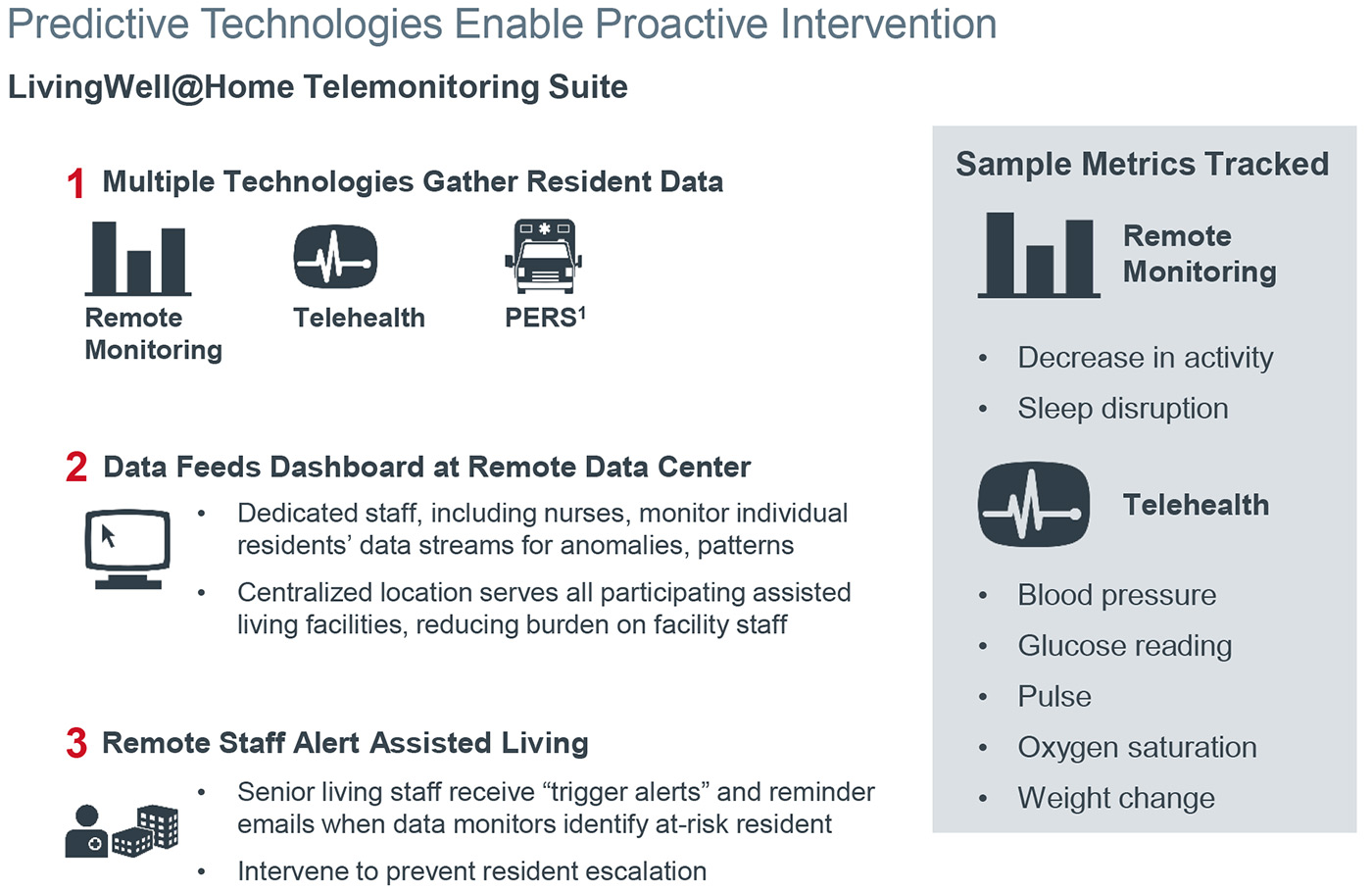Auto logout in seconds.
Continue LogoutPredictive data sources, informed by telehealth investments, can help alert staff to proactively intervene when a resident’s health status shifts abruptly. For example, sensor technology can help identify potential UTIs, which can escalate quickly, as the technology can track patterns of increased bathroom use at night.
The Good Samaritan Evangelical Lutheran Society has created their LivingWell@Home Telemonitoring suite to support assisted living residents. Under this program, a nurses in a data management station use data gathered from movement sensors, telehealth biometric monitors, and personal emergency response systems to identify residents who maybe showing signs of a potential health problem.
The nurses use that information to alert assisted living caregivers, who can then intervene before a hospitalization is necessary. Further, the design of the remote nurse station allows for future expansion of the program to also serve patients living in the community. While results are preliminary at the time of writing, the program has been well received by residents and staff.
Addressing acute events—before they happen

1) Personal Emergency Response System.
Source: The Evangelical Lutheran Good Samaritan Society; Post-Acute Care Collaborative interviews and analysis.
Case in Brief: The Evangelical Lutheran Good Samaritan Society
- Not-for-profit long-term care provider with locations across the US offering the following services: independent living, assisted living, memory care, adult day care, home health, hospice, rehabilitation, and skilled nursing.
- Received grant for demonstration project LivingWell@Home to evaluate efficacy and potential cost savings of telemonitoring systems in senior care.
- Included three data collection systems: remote monitoring sensor technology, personal emergency response, and telehealth.
- Data tracked by dedicated staff at remote monitoring center, who send alerts to caregivers to intervene should they note alarming trends in resident’s data.
- Developing grant-funded pilot program integrating LivingWell@Home data of community-based residents, including independent living, with patient-centered medical homes; under this model remote monitoring staff would alert medical home coordinator regarding patient trends.
Don't miss out on the latest Advisory Board insights
Create your free account to access 1 resource, including the latest research and webinars.
Want access without creating an account?
You have 1 free members-only resource remaining this month.
1 free members-only resources remaining
1 free members-only resources remaining
You've reached your limit of free insights
Become a member to access all of Advisory Board's resources, events, and experts
Never miss out on the latest innovative health care content tailored to you.
Benefits include:
You've reached your limit of free insights
Become a member to access all of Advisory Board's resources, events, and experts
Never miss out on the latest innovative health care content tailored to you.
Benefits include:
This content is available through your Curated Research partnership with Advisory Board. Click on ‘view this resource’ to read the full piece
Email ask@advisory.com to learn more
Click on ‘Become a Member’ to learn about the benefits of a Full-Access partnership with Advisory Board
Never miss out on the latest innovative health care content tailored to you.
Benefits Include:
This is for members only. Learn more.
Click on ‘Become a Member’ to learn about the benefits of a Full-Access partnership with Advisory Board
Never miss out on the latest innovative health care content tailored to you.

